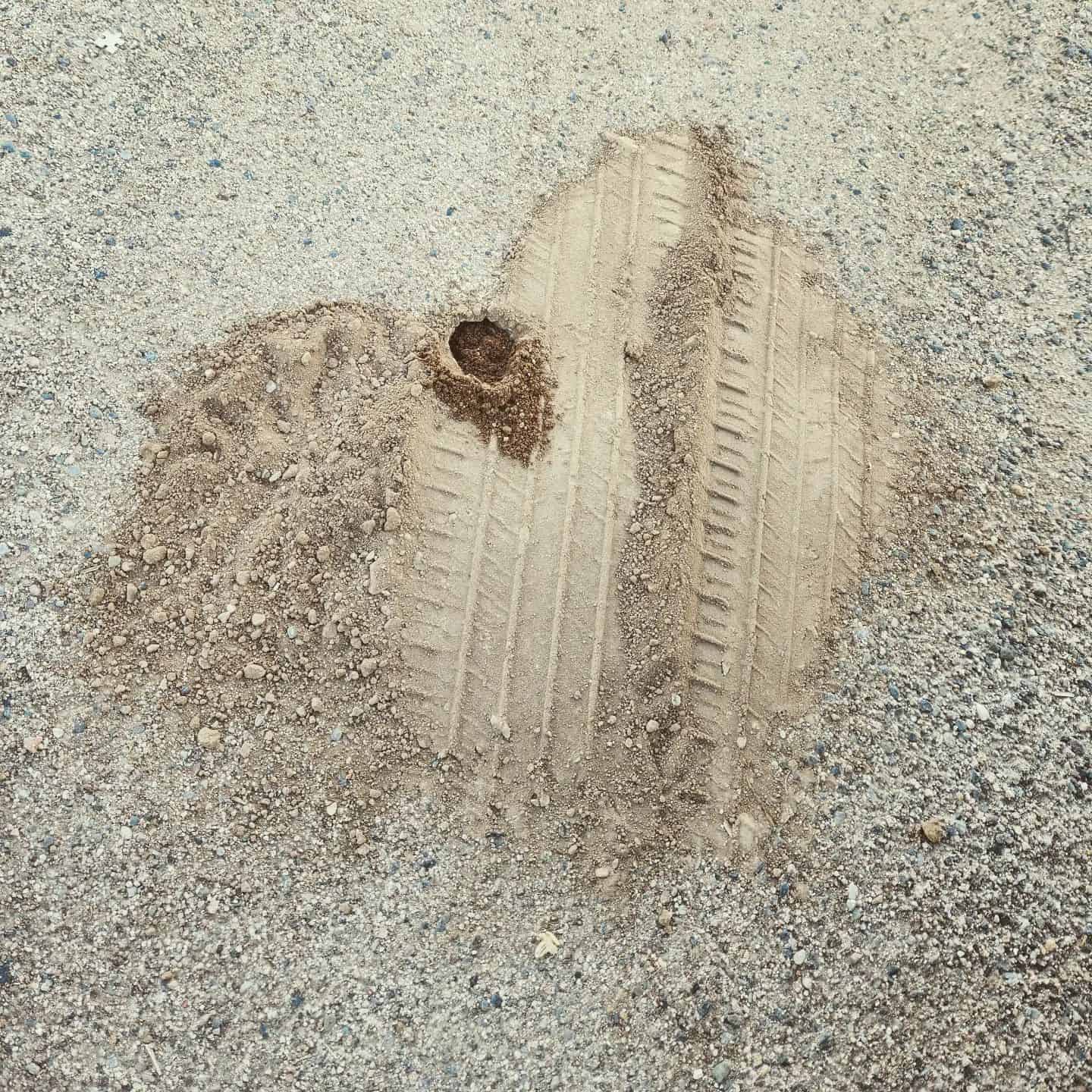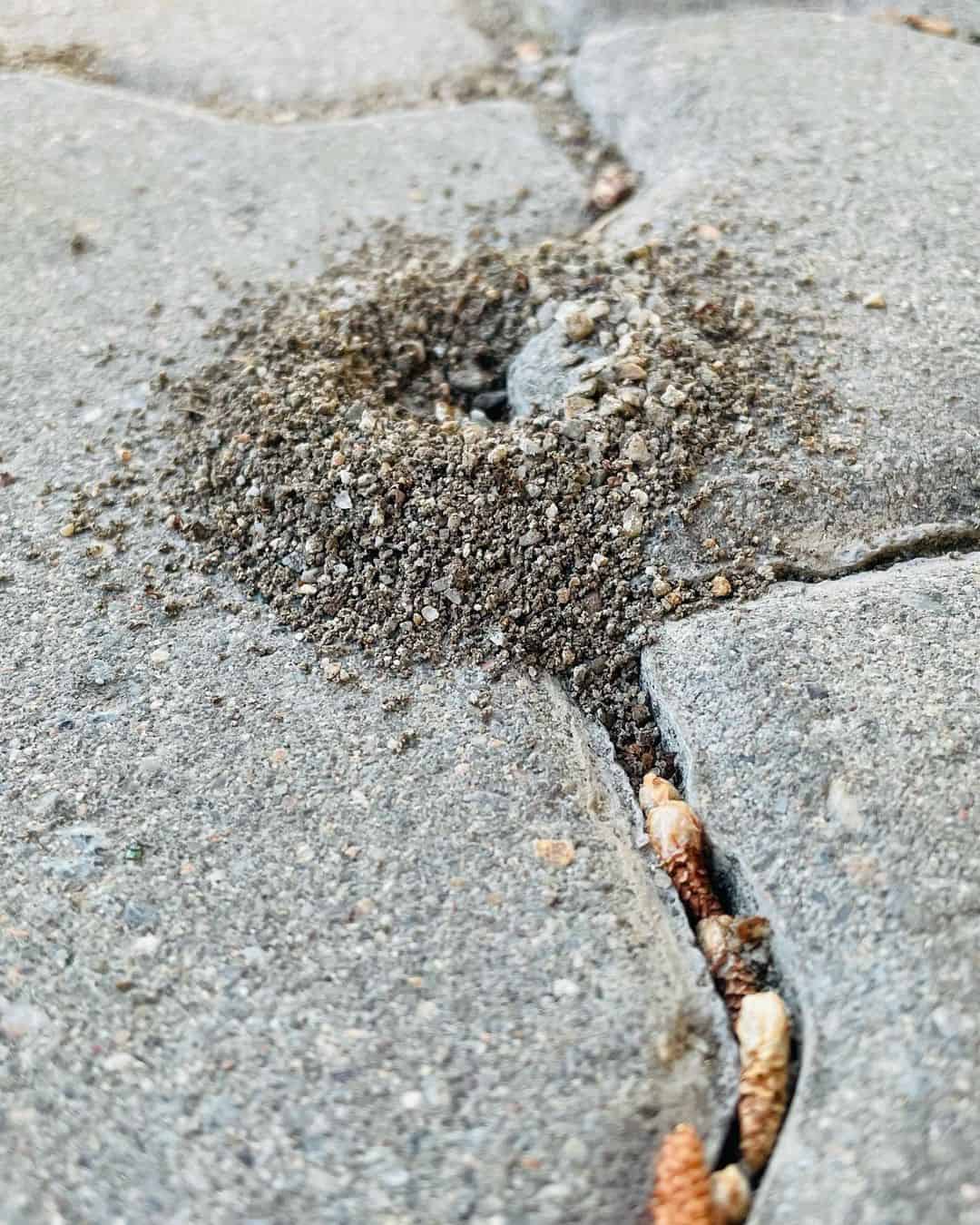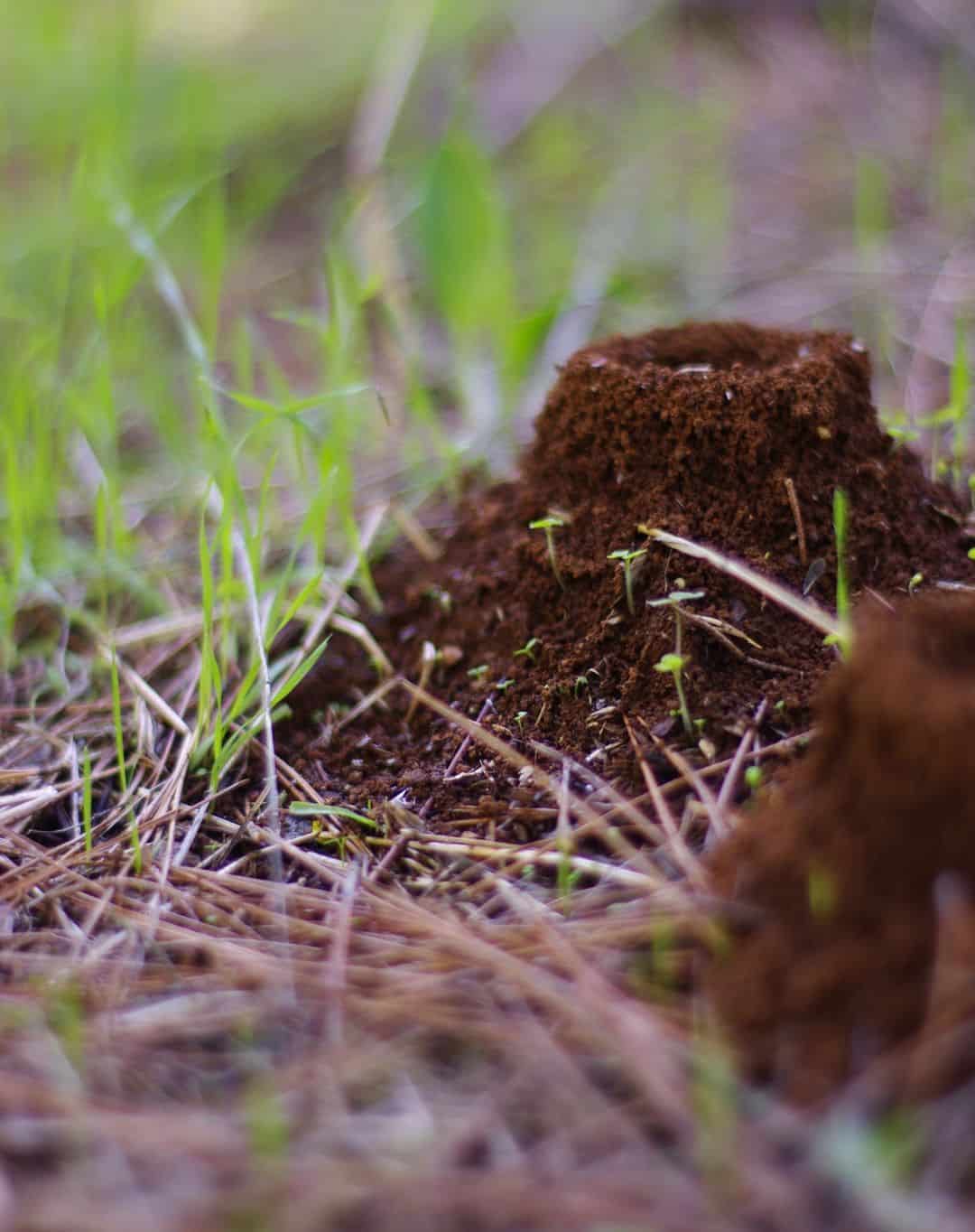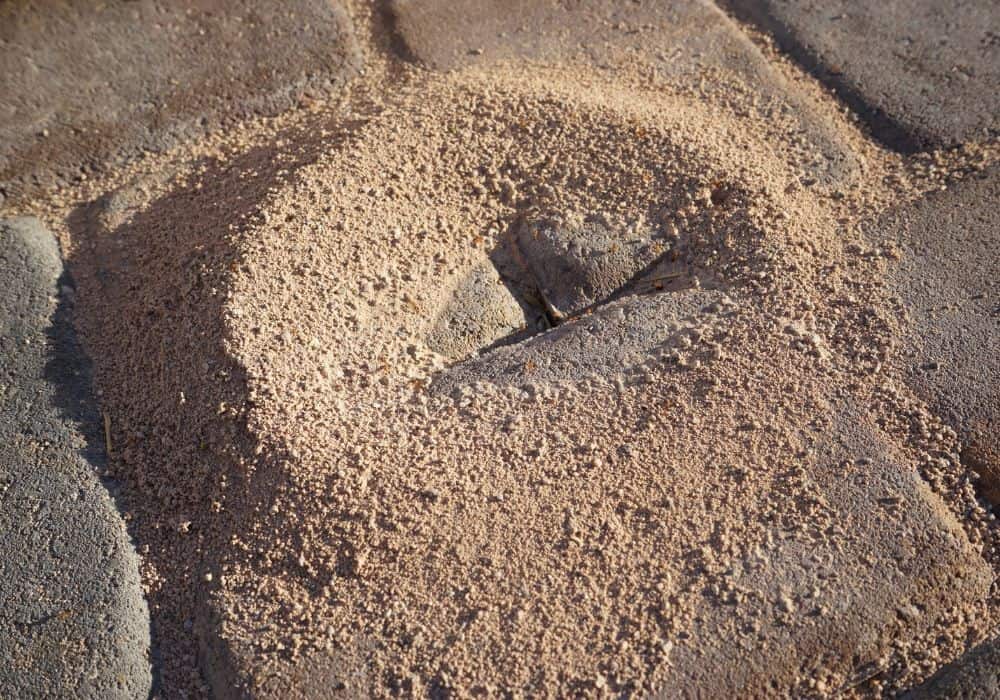After working so hard to maintain your lawn, you just want to sit down and enjoy the serene and breathtaking scenery.
However, there are a few things that can distract your sight and draw your attention from your yard’s beauty. For example, ant hills scattered throughout the landscape as if they popped up overnight.
Although these tiny mounds are not uncommon in backyards, have you ever asked yourself why they appear everywhere? What causes them?
This comprehensive article will help you address these questions and more. By the end, you will understand the reasons behind the abundance of ant hills in your yard and how to manage them.
What Are Ant Hills?
Before identifying the causes of anthills in your lawn, let’s first learn about ant behavior and their habitat.
Ants are interesting creatures that live in complex societies (colonies), where all members have a specific role and responsibility.
They establish these colonies underground by digging and excavating soil. As a result, the ants create a series of interconnected tunnels and chambers that serve as nests, galleries, and storage rooms.
As they expand their colony, the ants work together to move the excavated soil and dirt from the underground rooms to the nest’s entrance on the surface. Over time, the soil will pile up, forming small hills or stalagmites.
Most ant colonies have multiple entry and exit points. Because of this, several unsightly mounds might appear on your property.
Are Ant Hills Good or Bad?
Ant hills might look like piles of dirt, but they have an important role, depending on the ant species. For fire ants, the hills prevent rain from flooding the lower chambers.
These structures also help to control the colony’s climate. They regulate temperature and block the queen and larva from excess heat and cold. Additionally, they help improve soil aeration, improving soil structure and fertility.
While ant hills can be an eyesore, they are harmless to homeowners. However, having them close to your prompt puts you at risk of an ant infestation.
Ants constantly forage for food and water to sustain their colony. So, it’s no surprise if they make their way inside your home looking for these resources.
When this happens, the ant colonies can become a big nuisance since they are hard to eradicate.
And the worst part?
Ants can carry harmful pathogens like Salmonella, E. coli, and Shigella that can contaminate your family’s food and water. And if the ants find your home conducive, they might establish a satellite nest inside your house, resulting in a bigger problem.
Let’s not forget some ant species, like fire ants, are aggressive and can bite or sting humans when disturbed. Hence, they might prove dangerous to kids and pets living on the property.
Why Are There So Many Ant Hills on My Yard?

Image Credit: robrules2333
Several factors can entice ants to develop their nest in your yard. Below, we’ve highlighted a few.
1. Food Sources
As said above, ants are excellent foragers, always looking for tasty meals. So, several telltale mounds on your compound mean there’s a food source close by.
Chances are, your yard has food scraps or spilled crumbs that ants find attractive. These food sources offer ants an irresistible, never-ending buffet. As such, they encourage them to create their colonies nearby.
Another explanation is that your lawn has many pests that ants can feed on, including termites, fly larvae, and other insects.
Here’s something you didn’t know:
Garden pests like mealybugs and aphids excrete a honeydew, a sweet substance loved by ants. Surprisingly, some types of ants farm these insects for their sugar-rich secretions.
Fruit-bearing plants and decaying organic matter in your yard are also magnets for ants.
2. Water Sources
Do you have any puddles or leaky faucets on your lawn?
Like humans, ants require water to live and thrive. Therefore, if your yard has leaking pipes, standing water, or things that collect water (kid toys), expect ants to settle near them.
These water sources provide the creatures with a constant supply of water, encouraging them to settle and develop ant hills. Ants also erect their hills in gardens with moisture-rich soils.
3. Shelter and Nesting Opportunities
Ants are not only attracted to food and water. An abundance of ant mounds in your yard implies the ants have found an ideal area to establish their colonies.
Probably, your lawn has many undisturbed spots or offers suitable soil conditions for nesting. Ants usually prefer loose, well-drained soils that are easy to excavate and offer stability for their network of tunnels.
In addition, objects like leaf litter, rocks, tall grass, and overgrown shrubs provide ants with gaps they can exploit as their nests. Also, they offer excellent hiding spots and protection against predators.
How Do I Get Rid of Ant Hills in My Yard?

Image Credit: idoiaslittlegems
Now that you know what are the culprits behind anthills, it’s time to learn how to get rid of ants and their homes.
Contrary to belief, you can’t get rid of an ant mound by stepping on it. You will just be destroying an entrance or exit, which will get repaired or replaced once you’re gone.
So, what’s the best way to eliminate ant hills from your yard? Well, you need to first deal with the ant colony. Here are a few effective methods you can use:
1. Chemical Methods
Perhaps one of the most popular ways of getting rid of ants is using insecticides or pesticides.
But this method is not without downsides. These chemicals might pose a danger to your family, pets, and environment. For example, they can kill the grass around the ant colonies.
Avoid products with Bifenthrin or Permethrin because they kill ants in contact. This is pointless because you will only kill a handful of ants. The rest will thrive underground and after a few days, new mounds will appear on your lawn again.
We recommend you select products with long-term effects, like Taurus SC and Maxfroce Complete. These chemicals contain sugars, proteins, and fats that ants love. Once ingested, the ants will spread the poison throughout the colony, killing everyone.
2. Non-chemical methods
If you want to reduce damage to the environment, consider taking an eco-friendly approach to ant control. The best non-toxic methods to eradicate ants and anthills include:
- Using Dish Soap
Are you looking for a simple, cheap, and hill control method that’s gentle on your yard?
You just need two simple ingredients: dawn dish soap and water.
Mix the two in a bucket and pour the solution directly into the ant hill tunnels. The solution will kill some ants and repel others, forcing them to relocate.
Anthills usually kill grass in the areas they form, leading to dry patches on your land. So, once you remove the anthills, carefully rake the area and sprinkle some grass seeds to facilitate regrowth.
- Boiling Water
Alternatively, you can pour hot water into the anthill. The boiling water will flow through the tunnels and chambers, killing all the ants along the way.
But it’s highly unlikely it will eliminate all the ants because the water will cool down as it makes contact with the soil or flows deeper into the colony.
Another downside to this method is that the water might kill surrounding grass and plants.
- Use Smells Ants Hate
Since ants have a keen sense of smell, you can use certain scents to repel them from your lawn. For example, ants hate spicy scents. So, you can use cinnamon, hot pepper, bay leaves, and peppermint oil to repel them.
Sprinkle the spice near the ant holes and different locations in your yard. Once the ants get a whiff of these spices, they will start relocating.
Such scents include cinnamon, black pepper, peppermint oil, and hot paper.
- Keep Lawn Clean
Avoid ant infestation by keeping your yard clean. Pick up trash like food scraps and crumbs and dump them in a well-sealed trash bin.
Furthermore, regularly maintain your yard by trimming overgrown vegetation and removing excess decaying matter and debris. Also, keep your lawn grass short.
If you do this, you can reduce attractants and create an inhospitable environment that discourages ants from building their nest in your yard.
Other Effective Natural Methods

Image Credit: jesdougi
- Eliminate Excess Moisture: Ensure there are no leaking pipes or standing water in your yard that can attract ants.
- Borax and Boric Acid: Borax powder is toxic to ants when ingested. It messes with their digestive system, leading to death. You can sprinkle the powder near the entrance of the anthills. The worker ants will carry back the powder to the colony, where other ants and the queen will ingest it and die. As for boric acid, you can use it in powder or liquid form.
- Homemade Bait Stations: Mix ant killers like borax, boric acid, and baking soda with butter, corn syrup, or peanut. Next, place the mixture in a container along an active ant trail. The ants will take the bait to the colony, where the kill will eat it and die.
Closing Thoughts
Ants are remarkable creatures that play a vital role in maintaining a healthy ecosystem. However, they can become a major headache if they establish their homes in your yard.
As discussed, several factors can attract ants to your lawn, including food sources, shelter, and water. If you learn to limit these attractants, you can prevent or discourage ants from developing colonies in your beautiful yard.
While you can use chemical methods to control or get rid of anthills, they have several disadvantages, like destroying the lawn environment.
Luckily, you can use non-toxic solutions ( mentioned above ) to foster a healthy yard ecosystem. Alternatively, you can hire a reputable pest control company or professional to handle the ant problem.
Do you have any queries? Leave us a comment below!
